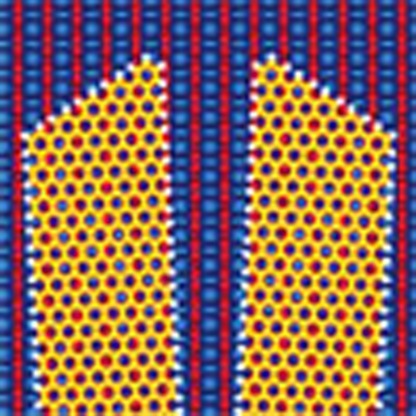- Record: found
- Abstract: found
- Article: found
Direct oriented growth of armchair graphene nanoribbons on germanium

Read this article at
Abstract
Graphene can be transformed from a semimetal into a semiconductor if it is confined into nanoribbons narrower than 10 nm with controlled crystallographic orientation and well-defined armchair edges. However, the scalable synthesis of nanoribbons with this precision directly on insulating or semiconducting substrates has not been possible. Here we demonstrate the synthesis of graphene nanoribbons on Ge(001) via chemical vapour deposition. The nanoribbons are self-aligning 3° from the Ge〈110〉 directions, are self-defining with predominantly smooth armchair edges, and have tunable width to <10 nm and aspect ratio to >70. In order to realize highly anisotropic ribbons, it is critical to operate in a regime in which the growth rate in the width direction is especially slow, <5 nm h −1. This directional and anisotropic growth enables nanoribbon fabrication directly on conventional semiconductor wafer platforms and, therefore, promises to allow the integration of nanoribbons into future hybrid integrated circuits.
Abstract
 Semiconducting armchair graphene nanoribbons with sub-10 nm width are of great technological
importance but yet to realize. Here, the authors report growth of such nanoribbons
on germanium and controlled crystallographic orientation and well-defined armchair
edges are obtained.
Semiconducting armchair graphene nanoribbons with sub-10 nm width are of great technological
importance but yet to realize. Here, the authors report growth of such nanoribbons
on germanium and controlled crystallographic orientation and well-defined armchair
edges are obtained.
Related collections
Most cited references64
- Record: found
- Abstract: found
- Article: found
Half-Metallic Graphene Nanoribbons
- Record: found
- Abstract: found
- Article: found
Energy Band Gap Engineering of Graphene Nanoribbons
- Record: found
- Abstract: found
- Article: not found